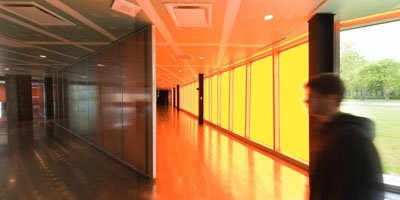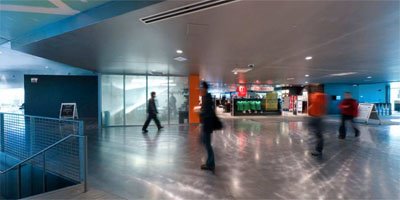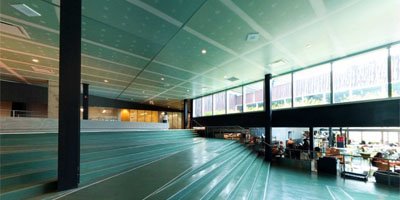
The Shockwave virtual tour works like a QuickTime VR, with hotspots within the scenes and a handy collapsible, interactive map that also indicates the current location and view direction.

With user interaction missing from so much architectural photography today, these interactive vignettes look like helpful tools for seeing how a building is used long after the architect has "left the building."

I can't help but wonder, though, if these panoramas (in general, not necessarily at IIT) are less than spontaneous. I'm not sure exactly how they're shot, but I see them as closer to very early photography and long exposures or stitched compositions of multiple images, rather than quick fraction of a second snaps. But, hey, I've been known to be wrong.
0 comments:
Post a Comment